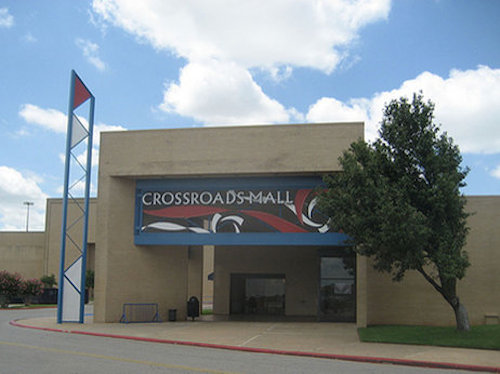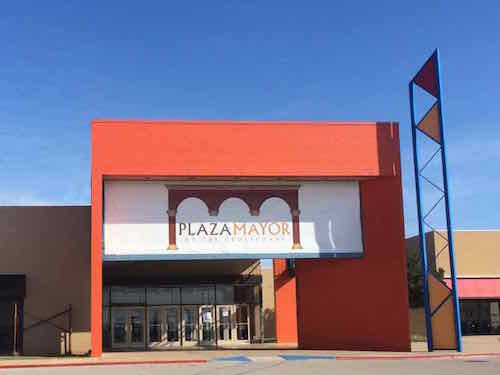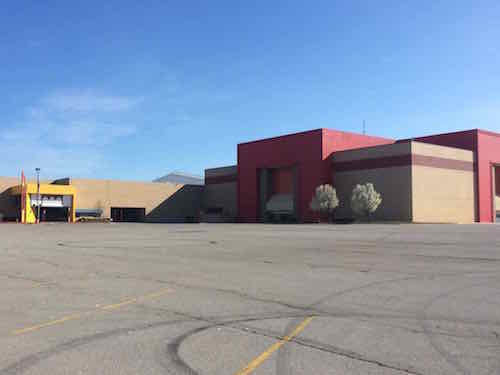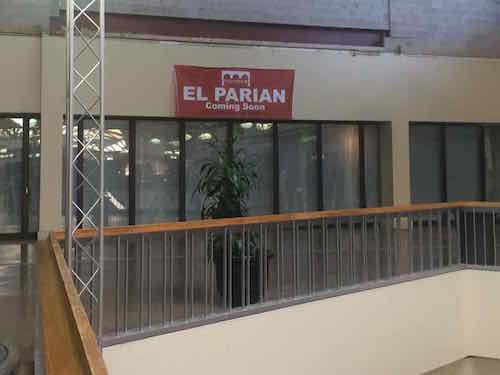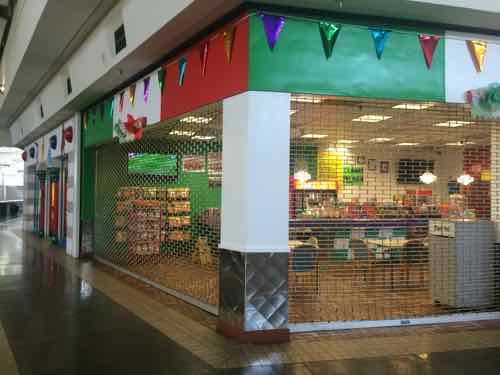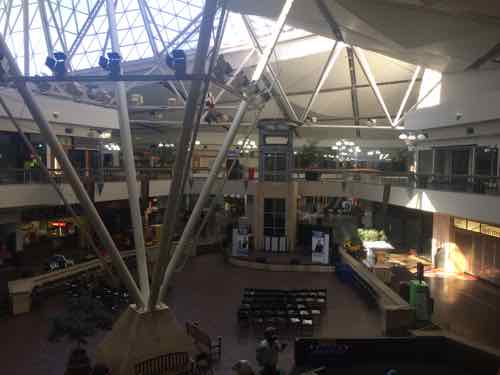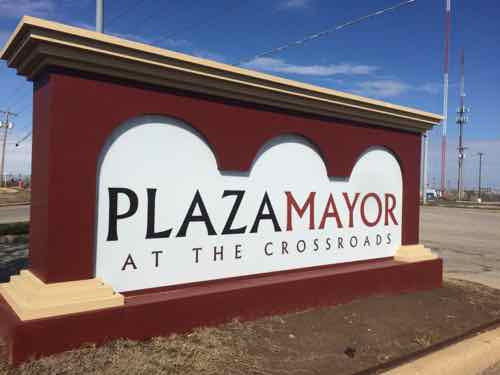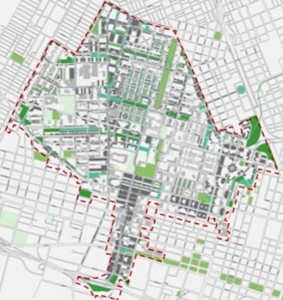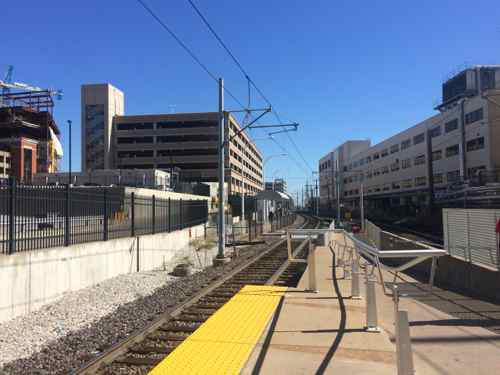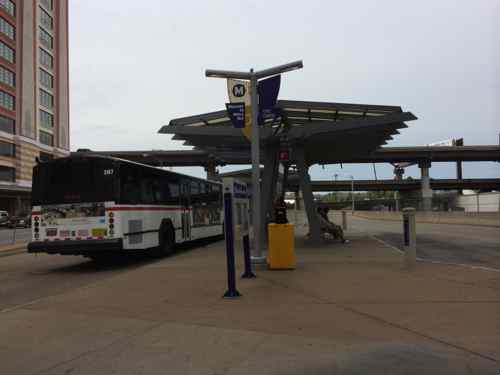The south Oklahoma City mall fell into the hands of the federal government in 2008, limped through the recession years with a handful of tenants while somehow managing to keep its doors open.
Not All Surface Parking Lots Are Secured Despite 2011 Rules
In 2011 St. Louis experienced a rash a car break-ins at various downtown surface parking lots, to restore the public confidence City Hall made a big deal about a new rule to make sure they’re secure. From a September 2011 press release about the new rules:
The City of St. Louis and the St. Louis Metropolitan Police Department (SLMPD), worked together to create new public parking lot rules. The highlights are:
• Parking lots shall be attended by an employee when in operation; and
• Parking lot attendants shall be educated by the SLMPD; and
• Parking lots shall be secured when not in operation.The City of St. Louis Building Division will grant waivers to parking lots that have demonstrated they are safe and secure. These waivers will be reviewed periodically.
You can read the complete Building Commissioner’s Order #1001.
On April 30, 2014 I emailed various city officials, including Building Commissioner Frank Oswald, about the surface parking lots adjacent to the east & north of my building, asking if they were exempt from this rule. I also mentioned the poor condition of the one to the East (1601 Locust).
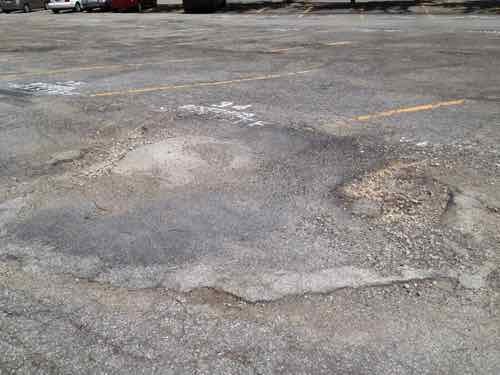
Mr. Oswald replied the next day:
Steve, These lots are not exempt. It sounds that you are telling me the one lot is used for ballpark pay parking? I will copy my staff to put this on there list to check on for compliance with order 1001. I am not sure but it sounds if you are concerned that one or both lots are in poor condition, I would appreciate you putting in a c.s.b. complaint so we have a record. 622-4800 and we can then do a property maintenance inspection.
I contacted the Citizens Service Bureau (CSB) and the next day replied to all with their report number — SR #601609.
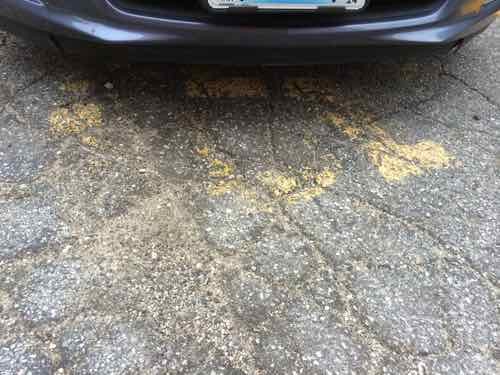
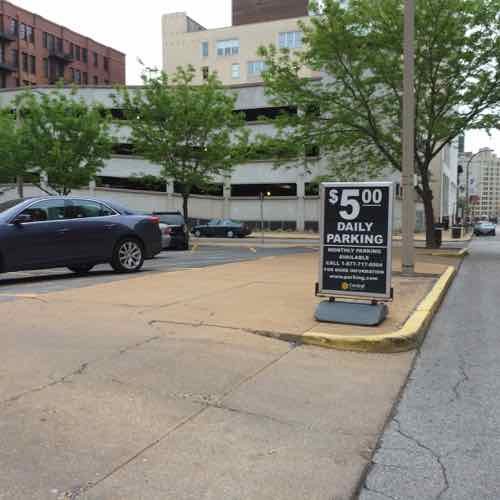
One staff person replied to all:
Frank,
We have looked at lots in this area very recently and have found many lots don’t appear to have an actual physical person attending the lot. One of the big problems in enforcing Rule # 1001 is the difficulty in determining if an attendant is within 1 (one) mile of the lot. For example, an attendant for the lot at 1200 Washington could actually be at the Casino Queen in Illinois and still be considered in compliance according to the “Rule”!
Huh? How can an attendant watch a lot that’s one mile away? This lot used a metal collection box for parkers to self pay — no attendant unless during a special event. Oswald replied to all:
Ok but if we look at it 3 times in 10 days and no one is there each time I think we can conclude they are not monitoring in accordance to the policy and we should tell them they are in violation.
That was the last I heard from them on this issue. Here are some more photos:
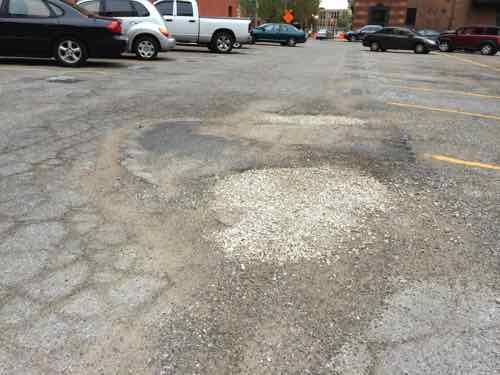
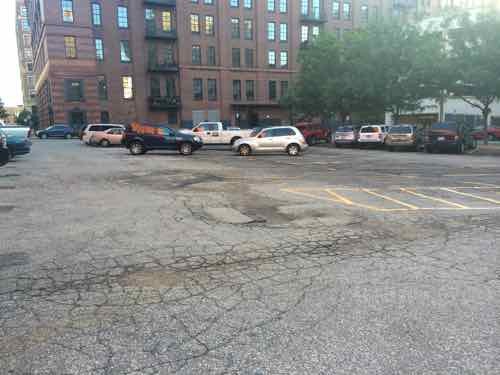
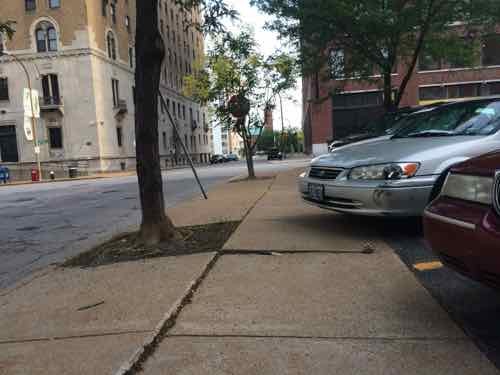

Things only got worse as the months passed by, nothing changed — until November 25th — the old metal cash box was gone.
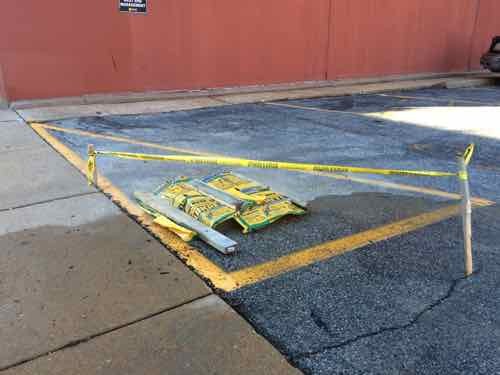
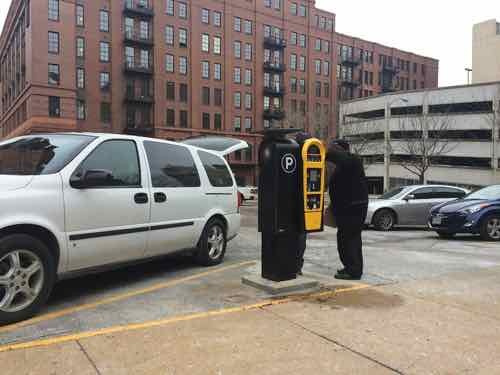
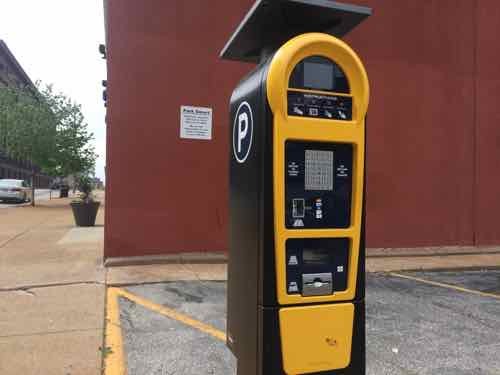
The other change is the parking fee dropped from $5/day to $3/day to compete with the lot to the north of our building.

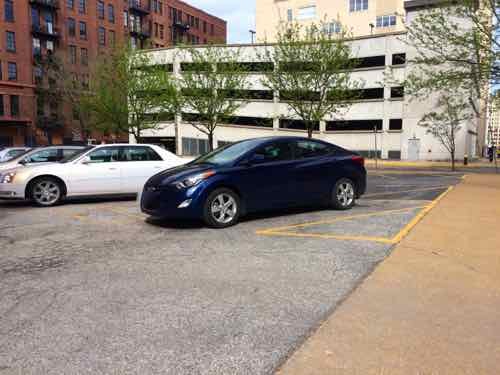
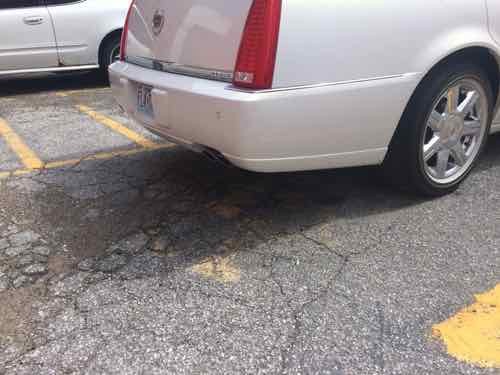

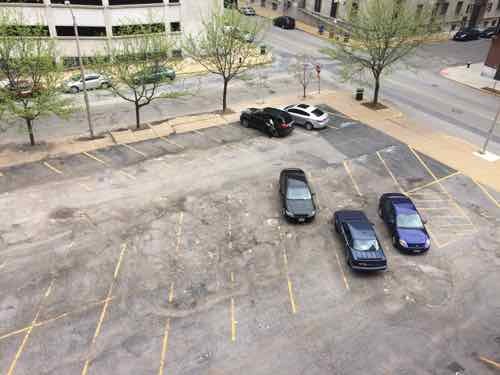
Recap: poor physical condition, not secured, cars able to overhang the sidewalk, only one disabled space — not properly marked, no attendant.
This lot is owned by PHAM LLC of Wood River, Il., the tax records are mailed to a residence. The resident is Peter Heinz, principal at Cardinal Investments, Inc., of the same address. The lot is managed by Central Parking. Time to follow up with Frank Oswald and perhaps mail a letter to Mr, Heinz in Wood River IL.
— Steve Patterson

